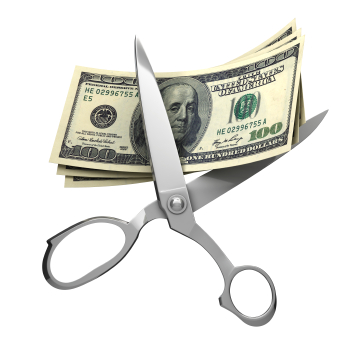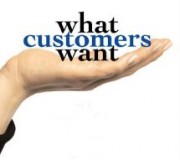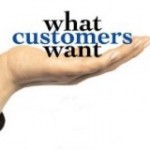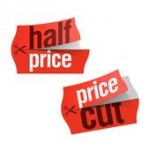 What would it be worth to you if never had to worry again about competing based on price alone?
What would it be worth to you if never had to worry again about competing based on price alone?
If your customers keep asking you for a better price, I am going to show you how to get the price that you deserve and close more sales.
We now know there are 3 distinct parts of the brain and each one of them has a different function. However, only 1 of them is responsible for decision making and it fires up around 8 seconds before you are consciously aware that you have even made a decision. The research and information I am about to share with you hasn’t come from psychology, the personal development industry or even a marketing agency – these findings were made by neuroscientists studying brain wave activity with fMRI, EEG and retinal tracking devices. They were looking to find out which part of your brain lights up when it is presented with different stimuli and the findings have been documented and published in respected publications like the Wall Street Journal and the Harvard Medical Journal.
The biggest part of the brain is the neo cortex. We are the only species on the planet that has developed this part of the brain. It is the last thing that forms in the womb and it lights up when we listen to music, look at colours, speak, read and process numbers. If you ever hear people talking about right vs. left brain thinking, they are talking about the neo cortex. In a nutshell – IT THINKS.
Similarly, when your customer says “I need to think about it” or “is this the best price I can get?” this part of the brain is firing up and looking for data. This uses up tons of your brain energy and prolongs the decision making process. If you want to drag out the process of getting your customer to decide or compete on price, you want to make sure that your customer has to us this part of his brain. Make sure you give your customer lots of BIG words, numbers, graphs, lists of features and benefits, talk about your competitors and how you stack up next to them – and your customer will NOT decide BUT he will do a whole lot of thinking and take up more of your valuable time and energy in the process.
Let’s move on to the middle or mammalian brain – this is the part of the brain that we share will every warm blooded creature on the planet. This is where you process emotions and feel. But this is not where you make decisions.
At the top of your spinal cord, there is a collection of neurons – which are commonly referred to as the old or reptilian brain. This is the first part of your brain that is formed in the womb and it is the part that keeps you alive – all bodily functions that take place below the level of consciousness, are controlled by this part of your brain.
It is your fight or flight brain – and its sole responsibility is to ensure your safety and survival. It houses the amgydala – which is the chemical factory in your brain that regulates all bodily functions. And it is the part of the brain that lights up when you DECIDE.
It lights up even before you have conscious awareness that you have made a decision. Now, while it is very true that this is the most primitive part of your brain, the good news is that it is very predictable. By understanding how this part of your brain works, you will never again bore and overwhelm your customers AND you will never again be lured into the trap of competing based on price.
How will you do this? By understanding how this part of your customer’s brain works, you can help him to use the least amount of mental energy in processing your message which means that he will make quicker decisions. It is important to remember that unlike the neo-cortex up here (the thinking part of your brain), this part right of your brain is automatic – it does not think, it only DECIDES and ACTS. It is always at work scanning your environment looking for information of value to your survival.
So you might be wondering how does this apply to the price that you charge for your product/service?
Just for a moment, I want you to imagine that you are in the business of selling pizzas. Now, it doesn’t matter whether your business is called Pizza Hut, Dominos, Boston Pizza or Pizza World… you are basically selling an undifferentiated product and the market that you find yourself in looks price conscious, doesn’t it? The reason for that is simple – the consumer finds it hard to distinguish between your pizza and the next guy.
Now if you happen to BE the owners of a Chicago Deep dish pizza shop you might argue that your pizza is better because your crust is thicker and you provide more toppings and value. But in the eyes of the consumer, your pizza is still not really worth much more than the next guy’s pizza. You might be charging $20 and your competitor is charging $18.50. Why is that?
It’s because even though you think there is a difference, in the eyes of your customer, there isn’t. 95% of what you and the next guy offer are essentially the exact same thing. And as long as you keep operating in that zone with a marketing message that doesn’t stand out and stake a claim, you will continue to compete on prize because your customer is up in his neo-cortex trying to figure out which pizza is the best one to order.
So knowing this, what could you do differently? Well one company in 1973 identified a way to stand out and grab market share. It didn’t claim to have the best, the thickest or even the cheapest pizza, it just made you a promise that if you ordered from them, you would get it in 30 minutes or your pizza was free. It was the most successful campaign in the history of the industry – for good reason.
Think about it, when you order a pizza, what is the one question that you have in the back of your mind? I wonder when the pizza will get here?
Dominos answered that question for you. They stopped making you need to think about it and they triggered the part of your brain that decides and dials.
This is the power of Sales Seduction – understanding why your customer says YES and knowing what to say in order to close more sales. Can you see now how knowing this information can help you accelerate your sales process, close more sales, trigger decisions and allow you to charge a fair price for your product/service?
Great – so your homework today is to go back through one of your sales or marketing messages and identify all the ways that you are boring or overwhelming your prospects. The key to NOT competing on price ever again, lies in doing your homework to help you close more sales.
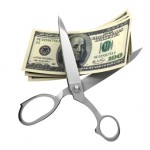 I’ve got a major challenge for you…
I’ve got a major challenge for you…
I want you to assess what you are currently spending on marketing – brochures, website, pay per click campaigns, PR, newspaper, direct mail, social media etc. – and I want you to slash the total budget by 20%.
No matter what you are selling and where you are selling it, I guarantee that you won’t miss the 20% you just saved and put back in your bank account. And there is a very good reason for that…
98% of the people who see your message either don’t remember it or are not compelled to take action. You are spending thousands of dollars each year on sales and marketing campaigns and the vast majority of the people who see your message don’t really “get” your message – so they can’t possibly recall it or buy from you.
So with the money you just saved, I’m going to show you how to increase your sales. To do that, I want you to take a few minutes right now to re-engineer your message from the ground up and give yourself a better chance of achieving cut through, retention and action with your ideal target audience. Thankfully, it won’t cost you much to take the time right now to create a message that increases your sales (by helping more of your prospects to say “yes”). And if more of your qualified leads say “yes”, the money you do have left to spend in your sales and marketing budget is going to produce a much better return.
To prove my point, I’d like to make you an interesting offer…
What if I were to give you either $50 cash right now or a piece of paper where I will write the net present value of a five year annuity on $10 at a compound annual interest rate of 10%, adjusted for CPI?
Which of these offers sounds more appealing and valuable to you? Which would you rather take right now? Or said another way, which of these can you take now, put in your wallet or spend it at the shopping centre?
Unless you are one of those very rare individuals who can calculate in your head the value of my second offer, I’m willing to bet you’d rather just take the $50. And that makes a whole lot of sense, because everyone knows what $50 is worth. There’s nothing confusing about it, is there?
The part of your brain that makes decisions is not interested in working hard to figure out what my message means and what it’s worth. That part of your brain is looking for something that is tangible and relevant.
And if you’re unsure about whether a message is tangible or not – ask yourself this simple question “would a 6 year old understand it?”
Think about it – if I offer you a $50 note, an orange or a book, you don’t have to think very hard to decipher the value or usefulness of what I am offering you, do you? All of these items are equally easy to understand. As soon as you see them, you know what they are and you know exactly what you can do with them, don’t you? $50 will buy you enough food to cook a meal, the orange is good for you and a book is something that you can read. There are no directions or heavy thinking required to make sense of what I am offering you. Your new brain doesn’t have to do any thinking (and wasting time) to get my message.
So what does this mean for you, your message and your customers?
If you are making it hard for your prospects and customers to understand what you do and whether they are getting a good deal, you need to spend some time right now making your offer more tangible. Ask yourself “does my message include a bunch of big words, fluff and jargon?” Could it be boiled down to something simple that even a 6 year old could understand? What do you need to do today to re-work and re-communicate it more clearly so that your prospects will be able to say “yes”? Can you simplify the words that you use or introduce photos or props to get your message across more quickly and clearly?
Producing a simple, succinct message is a lot harder than being lazy and throwing together an ad full of useless, complicated jargon and information. A good rule of thumb here is to remember that you should work harder to craft and simplify your message than your prospect has to in order to decipher it. Someone has to do the hard work – either you can do it before you put it out there or your audience will be forced to do it which means they may get stuck thinking about it instead of deciding.
Now if you are serious about saving money and you would like to increase your sales, you won’t spend another collar until you review your materials and do whatever it takes to make your message more tangible. You don’t have to spend more money to chase leads and increase your sales. What you really need to do is take the complication and confusion out of your message so that more of your prospects can say “yes” now.
 For those of you who are in the retail industry, you may have noticed a recent trend to clean up in-store environments – reduce shelf heights, remove dense ends and dump bins, widen aisles etc. – in order to increase comfort and make the shopping experience less stressful for customers.
For those of you who are in the retail industry, you may have noticed a recent trend to clean up in-store environments – reduce shelf heights, remove dense ends and dump bins, widen aisles etc. – in order to increase comfort and make the shopping experience less stressful for customers.
The big question then becomes “does clean make customers keen”? According to Walmart, arguably the largest and most successful retailer in the world, clean stores mean fewer beans (on the bottom line).
As reported in the New York Times, Walmart conducted a massive in-store experiment to improve sight-lines, rationalize the overall number of items offered, remove warehouse-like merchandising in centre aisles, and increase the width of core aisles. According to Walmart’s CEO William S. Simon, “(Customers) loved the experience. They just bought less.”
As a result, Walmart reverted back to its original strategy of offering more products, with tighter aisles, more clutter and lots of bargain bins in the hopes that customers would spend more because of a perception “there were bargains to be had”.
If you do a quick search on the internet, there are dozens of experts who subscribe to the view that a larger selection, more bargain bins, and sales signage equates to “better value”. In essence, the more you look like a market stall, the better it is to generate buzz and sales. They argue that if your merchandise is neatly presented on the walls and in well organized aisles, with no point of sale impulse offers and dense ends full of 2-for-1 specials, customers will tend to think your store is expensive (i.e. overpriced) and they will not buy from you.
And if you think about it, you can probably name a whole list of retailers who subscribe to this “clutter is good for business” philosophy and they seem to be successful. But how can we be sure that clutter makes customers keen? Have we been too quick and prematurely jumped to a conclusion that clean is a traffic and transaction turn-off?
Recent empirical evidence from neuroscience and neuromarketing sheds new light on how we think, and more importantly, how we make decisions. In fact, the decision making part of your brain responds strongly to certain stimuli only.
Did you know that your brain consumes 25% of your body’s energy? As a result, you brain wants to conserve energy so you tend to pay attention and be attracted to things that have sharp contrast, high visual appeal, strong emotional cues and a clear beginning vs. end message.
Now what does this mean for you in the context of your shopping environment?
A chaotic, cluttered store is cumbersome for your brain to navigate – you have to work hard mentally to hunt down and search for bargains. It may create some emotional appeal but it is likely perceived as having low contrast, low visual appeal and no clear beginning vs. end. According to neuromarketing studies, shopping in this environment takes time and energy and it also forces your brain to go into “thinking” mode. This is a critical point because thinking is counter-productive to deciding. Thinking takes place in one part of your brain (the neo-cortex), while deciding happens much more quickly (and automatically) in your old or “reptilian” brain.
So what does this neuromarketing research mean for the strategy and conclusions reached by Walmart?
Based on neuroscience, the strongest buying cue that you can give your customers is this – if your store (or business) has incredible bargains, people will buy (and even sift through a maze of clutter) because something is in it for them. The “what’s in it for me” (WIFM) principle is one of the strongest influences on the part of your brain that decides.
However, there is no hard evidence to suggest that clutter makes your customers keen.
Walmart and many others have come to a conclusion based on what they THINK people are doing to reach a buying decision in-store. However, neuromarketing has produced empirical evidence to support the opposite conclusion is more probable. Clutter and chaos create an environment where your customers have to think too hard, which is exhausting for the brain. They will do it if they have to, as long as the perceived bargains and value are very high.
Wouldn’t it make more sense to find another way to communicate good value and service without exhausting your customers and causing them to waste their time?
Wouldn’t you be more likely to get more sales and word of mouth referrals from your delighted customers?
In the end, Walmart may be correct about the fact people buy more in certain circumstances but they are wrong about WHY that is. The best way to create more excitement and sales is to make it easier for your customers to decide. You need to show them what’s in it for them, increase the contrast between your solution and your competitors and communicate a strong, clean visual message that compels them to say “YES”.
Is your business growth starting to plateau or stagnate?
It’s easy to sit back, take the foot off the accelerator and watch the sales roll in, especially if you’ve been satisfied with your recent performance. But keep in mind that if you slack off too much, your competitors will soon catch up and eventually put you out of business. At some point you may even find that you have stopped providing what your customers want.
Take a look around – businesses (and your competitors) are closing their doors due to the drop in consumer spending – which means MORE potential customers for businesses like YOU, that do survive. Today is the best time to take steps to revamp your marketing efforts and respond to the needs and the pain of your target market.
In these tough times, it’s going to take more than “thinking outside the box” and goodwill with existing customers to secure the survival of your business.
I want you to STOP right now and make a list of everything that you (and your competitors) do NOT do to make it easy for your prospects to buy from you. If you want to succeed over the long term, you will take a good hard look at both of these lists and find a way to do whatever it takes, for as long as it takes, to win your customers and keep them.
Granted, this is not an easy task. Most businesses will continue to do what they have always done – guess or assume what they think their customers need. However, no matter how challenging it is to ask the hard questions and re-engineer your strategy, I guarantee it will be a whole lot less painful and stressful than going under.
I had a married couple come to me once for advice and coaching – both the business they were in and their relationship were at the breaking point. The husband turned and said to me “I don’t understand it. I do everything humanly possible for my wife and she doesn’t appreciate me and I don’t think I can possibly do anything more to satisfy my customers – they are never happy and always want more. What can I possibly do?”
My answer to this age old dilemma applies to him, his marriage, and to you in your business right now. “Sounds like you are doing a lot. Too bad it’s everything BUT the very thing that your partner and customers need most.”
While this may sound harsh, I think you will agree that it is absolutely true. It does you no good to work harder doing everything…instead of focusing on the 1 thing that you customers actually need. Wouldn’t it be easier for you to work smarter, not harder, if you knew with absolute certainty what that 1 thing is?
How can you take the lesson from my client and apply it to your own business right now?
How could you go about figuring out what that 1 thing is?
I want you to do something really radical today and start asking both your prospects and existing customers what they need. You need to find out:
• What is the biggest challenge your prospects are facing in their business?
• When your customer thinks of the product or service you provide, what is THE most painful or difficult issue associated with acquiring it?
• What is the most important criteria to your purchaser when evaluating a company like you?
• What are some things that he/she thinks about or considers from a financial perspective when selecting that product/service or a vendor?
• What is the key strategic driver for you customer’s decision?
It doesn’t really matter what you have done up to this point or how hard you are working. There is no prize for volume or quantity. What counts is quality and relevance. You need to do determine what your customers want…and give it to them.
02 Oct 2012
Can You Offer it at a Cheaper Price?
Do Your Prospects Often Ask You For a Cheaper Price?
What would it be worth to you if you could STOP competing based on price?
Knowing this valuable information before you craft your next sales or marketing message, can help you to influence your customer to decide quickly and make price a non-issue.
If your sales process is currently taking too long, this information will help you close sales faster.
If your customers need to “think about” doing business with you, this information will help you to stop boring and confusing them.
If your customers keep asking you for a better price, I am going to show you how to get the price that you deserve.
We now know there are 3 distinct parts of the brain and each one of them has a different function. However, only 1 of them is responsible for decision making and it fires up around 8 seconds before you are consciously aware that you have even made a decision. The research and information I am about to share with you hasn’t come from psychology, the personal development industry or even a marketing agency – these findings were made by neuro scientists, medical doctors studying brain wave activity with FMRI machines. They were looking to find out which part of your brain lights up when it is presented with different stimuli and the findings have been documented and published in respected publications like the Wall Street Journal and the Harvard Medical Journal.
The biggest part of brain is the neo cortex. We are the only species on the planet that has developed this part of the brain. It is the last thing that forms in the womb and it lights up when we listen to music, look at colours, speak, read and process numbers. If you ever hear people talking about right vs. left brain thinking, they are talking about the neo cortex. In a nutshell – IT THINKS.
Similarly, when your customer says “I need to think about it” or “is this the best price I can get?” this part of the brain is firing up and looking for data. This uses up tons of your brain energy and prolongs the decision making process. So, if you want to drag out the process of getting your customer to decide or compete on price, you want to make sure that your customer has to us this part of his brain. Make sure you give your customer lots of BIG words, numbers, graphs, lists of features and benefits, talk about your competitors and how you stack up next to them – and your customer will NOT decide <that is guaranteed> but he will do a whole lot of thinking and take up more of your valuable time and energy in the process.
Let’s move on to the middle or mammalian brain – this right here is the part of the brain that we share will every warm blooded creature on the planet. This is where you process emotions and feel. But this is not where you make decisions.
At the top of your spinal cord, there is a collection of neurons – which are commonly referred to as the old or reptilian brain. This is the first part of your brain that is formed in the womb and it is the part that keeps you alive – all bodily functions that take place below the level of consciousness, are controlled by this part of your brain.
It is your fight or flight brain – and its sole responsibility is to ensure your survival. It houses the amgydala – which is the chemical factory in your brain that regulates all bodily functions. And it is the part of the brain that lights up when you DECIDE.
It lights up even before you have conscious awareness that you have made a decision. Now, while it is very true that this is the most primitive part of your brain, the good news is that it is very predictable. By understanding how this part of your brain works, you will never again bore and overwhelm your customers AND you will never again be lured into the trap of competing based on price.
How will you do this? By understanding how this part of your customer’s brain works, you can help him to use the least amount of mental energy in processing your message which means that he will make quicker decisions. It is important to remember that unlike the neo-cortex up here (the thinking part of your brain), this part right of your brain is automatic – it does not think, it only DECIDES and ACTS. It is always at work scanning your environment looking for information of value to your survival.
So you might be wondering how does this apply to the price that you charge for your product or service? Just for a moment, I want you to imagine that you are in the business of selling pizzas. Now, it doesn’t matter whether your business is called Pizza Hut, Dominos, Eagleboys, Boston Pizza or Pizza World… you are basically selling an undifferentiated product and the market that you find yourself in looks price conscious, doesn’t it? The reason for that is simple – the consumer finds it hard to distinguish between your pizza and the next guy.
Now if you happen to BE the owners of a Chicago Deep dish pizza shop you might argue that your pizza is better because your crust is thicker and you provide more toppings and value. But in the eyes of the consumer, your pizza is still not really worth much more than the next guy’s pizza. You might be charging $20 and your competitor is charging $18.50. Why is that?
It’s because even though you think there is a difference, in the eyes of your customer, there isn’t. 95% of what you and the next guy offer are essentially the exact same thing. And as long as you keep operating in that zone with a marketing message that doesn’t stand out and stake a claim, you will continue to compete on prize because your customer is up in his neo-cortex trying to figure out which pizza is the best one to order.
So knowing this, what could you do differently? Well one company in 1973 identified a way to stand out and grab market share. It didn’t claim to have the best, the thickest or even the cheapest pizza, it just made you a promise that if you ordered from them, you would get it in 30 minutes or your pizza was free. It was the most successful campaign in the history of the industry – for good reason.
Think about it, when you order a pizza, what is the one question that you have in the back of your mind? I wonder when the pizza will get here?
Dominos answered that question for you. They stopped making you need to think about it and they triggered the part of your brain that decides and dials.
This is the power of Sales Seduction – understanding why your customer says YES and helping him to say YES to your product/service. Can you see now how knowing this information can help you accelerate your sales process, close more business, trigger decisions and allow you to charge a fair price for your product/service?
Great – so your homework today is to go back through one of your sales or marketing messages and identify all the ways that you are boring or overwhelming your prospects. The key to NOT competing on price ever again, is in making it easier for your customers to say ‘YES’.


